What Are Forex, Crypto, and Stock Trading?
Discover the key differences between forex, crypto, and stock trading. Explore trading hours, volatility, risks, and benefits to choose the right market for your goals.
 Writen by:
Arslan Ali But
16 January 2025
8 minutes read
Writen by:
Arslan Ali But
16 January 2025
8 minutes read

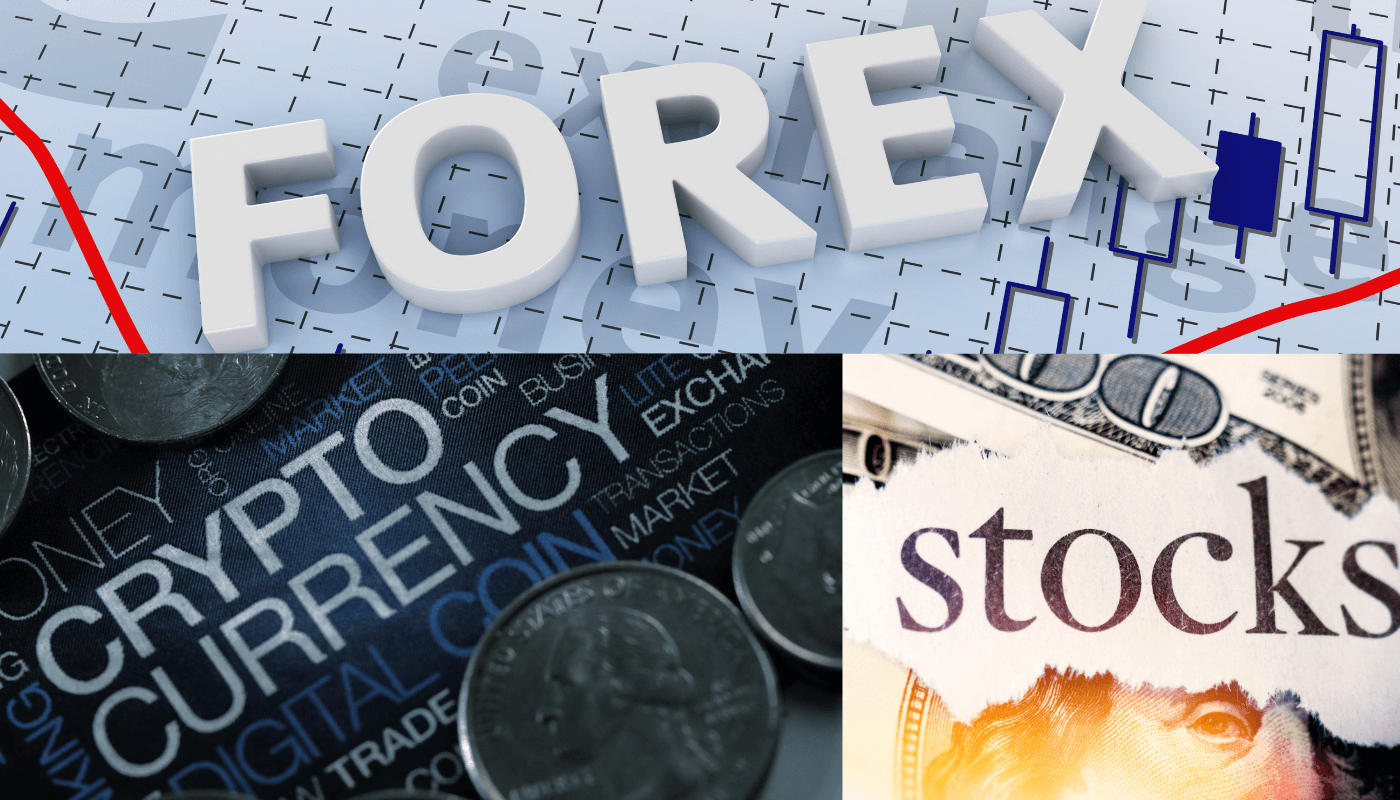
Forex, cryptocurrency, and stock trading are among the most popular financial markets, attracting billions of traders globally. Each market operates uniquely, from forex's 24-hour currency trading across major global hubs like London and New York, to cryptocurrency's decentralized and highly volatile blockchain-based assets. Meanwhile, stock trading allows ownership of company shares through exchanges like NASDAQ or the NYSE.
Understanding these markets is essential as they come with varying levels of market volatility, liquidity, and risk. Whether you're interested in short-term profits through forex or crypto or long-term gains via stock trading, your strategy must align with your financial goals and risk tolerance. With platforms like WhereToTrade, finding the right broker tailored to your needs has never been easier. This guide explores the nuances of each market, helping you make informed decisions to maximize opportunities.
What Is Forex Trading?
Foreign exchange trading, or forex, involves exchanging one currency for another on the global forex market. This massive financial market allows individuals, businesses, and institutions to profit from fluctuations in exchange rates. Operating 24/5, the forex market spans major financial hubs like London, New York, and Tokyo, making it the most accessible and liquid market in the world.
Key Features of Forex Trading
- High Liquidity: With a daily trading volume exceeding $7 trillion, forex ensures swift trade execution without significant price changes.
-
Currency Pairs:
Forex trading revolves around buying and selling currency pairs, categorized as:
- Major pairs: Includes USD and frequently traded currencies (e.g., EUR/USD).
- Minor pairs: Non-USD pairs, such as EUR/GBP.
- Exotic pairs: Emerging market currencies paired with majors (e.g., USD/TRY).
- Leverage: Enables traders to control larger positions with minimal capital, magnifying both potential profits and risks.
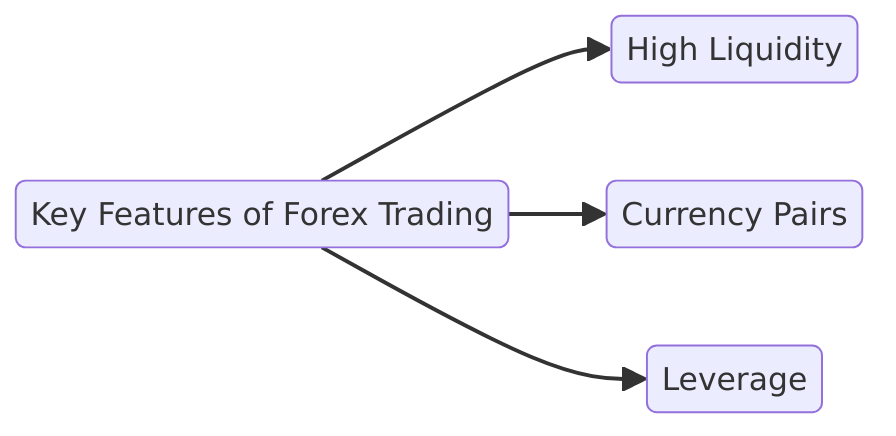
Common Currency Pairs
Some common currency pairs are given below in the table:
Forex trading’s global reach, liquidity, and accessibility make it an appealing market for traders looking to capitalize on currency fluctuations.
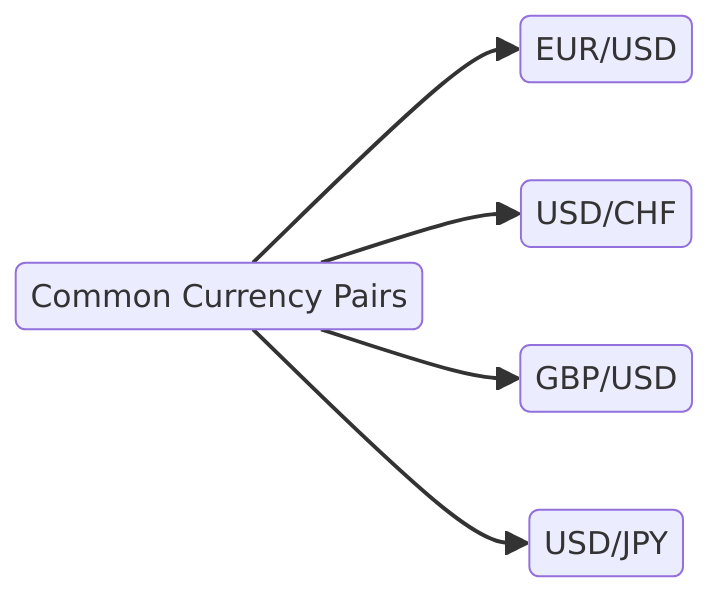
What Is Crypto Trading?
Crypto trading involves the buying, selling, and exchanging of digital currencies like Bitcoin (BTC), Ethereum (ETH), and others. Unlike traditional financial markets, cryptocurrencies operate on decentralized networks, free from control by banks or governments. Transactions are recorded and validated on blockchain technology, a secure and transparent digital ledger.
Unique Aspects of Crypto Trading
- High Volatility: Cryptocurrencies are known for significant price swings, offering high-profit potential but also increased risk. For instance, Bitcoin’s price surged from $30,000 to over $60,000 in 2021, then corrected sharply, exemplifying this volatility.
- 24/7 Market Access: Unlike stock or forex markets, crypto markets operate around the clock, allowing traders to participate globally at any time.
- Variety of Trading Pairs: Traders can access pairs like crypto-to-crypto (e.g., BTC/ETH) and crypto-to-fiat (e.g., BTC/USD), enabling diverse trading strategies.
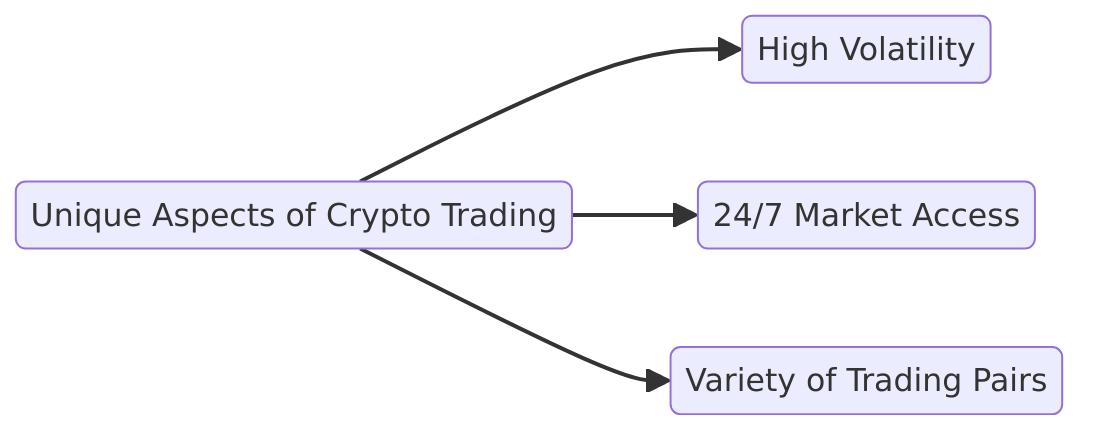
Challenges in Crypto Trading
- Regulatory Uncertainty: Governments continue to adjust their policies on digital assets, creating unpredictability.
- Cybersecurity Risks: Exchange hacks and scams pose significant threats to traders’ funds.
Despite these challenges, crypto trading’s decentralized and innovative nature continues to attract traders seeking new opportunities in this evolving and dynamic market.
What Is Stock Trading?
Stock trading involves the buying and selling of shares in publicly listed companies through stock exchanges like the New York Stock Exchange (NYSE) and NASDAQ. By purchasing shares, traders and investors gain ownership in a company, allowing them to benefit from its financial growth and performance.
Types of Stock Trading
- Day Trading: Traders buy and sell stocks within the same trading day, aiming to profit from short-term price changes. For example, a day trader might purchase Tesla (TSLA) shares at the market open and sell them by midday after a favorable price increase.
- Swing Trading: Positions are held for several days or weeks to capitalize on medium-term trends. A swing trader, for instance, might hold shares of a tech company after positive quarterly earnings, anticipating continued momentum.
- Long-Term Investing: Investors adopt a buy-and-hold strategy, keeping shares for years to benefit from compound growth and dividends. For example, someone investing in Apple (AAPL) in 2010 and holding until today would have seen substantial returns from both price appreciation and dividends.
Stock trading caters to various styles and timeframes, making it a versatile option for both active traders seeking short-term gains and long-term investors aiming for steady wealth accumulation.
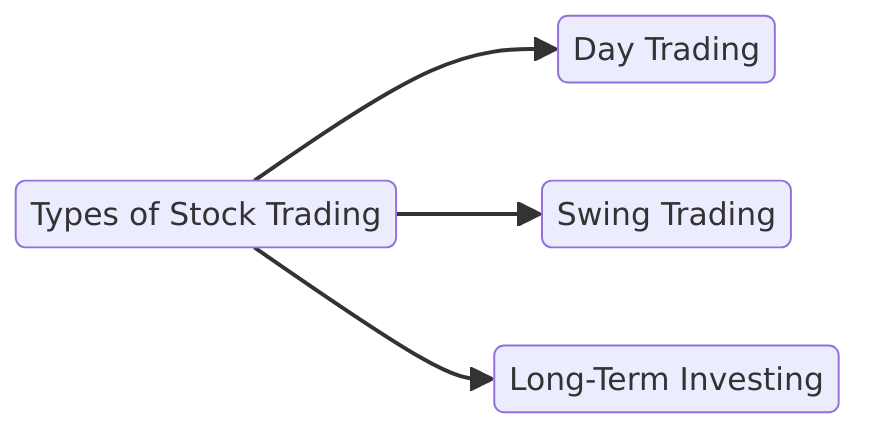
Key Differences Between Forex, Crypto, and Stock Trading
Trading Hours
- Forex Trading: The forex market operates 24/5, aligning with major financial hubs such as Tokyo, New York, and London. For example, a trader can trade EUR/USD during the overlapping hours of the New York and London sessions for higher liquidity.
- Crypto Trading: Cryptocurrency markets are open 24/7, allowing uninterrupted trading worldwide. This means you can trade Bitcoin (BTC) or Ethereum (ETH) even on weekends.
- Stock Trading: Stock market hours are limited to specific timeframes based on the exchange. For instance, the NYSE operates from 9:30 AM to 4:00 PM EST, restricting trading outside these hours.
Volatility
- Crypto: Highly volatile due to investor sentiment, regulatory updates, and innovations. For example, Bitcoin’s price surged after Tesla announced it would accept BTC, showcasing how news can drive sharp price movements.
- Stocks: Volatility depends on company performance, market trends, and economic conditions. A strong quarterly earnings report from Apple could boost its share price, whereas weak results may cause a drop.
- Forex: Moderate volatility influenced by geopolitical events and economic indicators. For instance, a better-than-expected U.S. jobs report often strengthens the USD against other currencies.
Market Size and Accessibility
- Forex: he Forex market is the largest financial market globally, with an average daily trading volume of approximately $7.5 trillion.
- Crypto: The cryptocurrency market has experienced significant growth, with a total market capitalization reaching over $3 trillion.
- Stocks: The global stock market is well-established, with the U.S. stock market alone having an estimated daily trading volume of around $478.72 billion.
Understanding these differences helps traders align their strategies with their financial goals and risk tolerance while choosing the right market.

Risks of Trading in These Markets
Forex Trading:
Excessive leverage can amplify losses, particularly during unexpected geopolitical events. Exotic currency pairs are also prone to market manipulation, adding to the risks.
Crypto Trading:
Extreme price volatility in cryptocurrencies can lead to significant losses. Security threats, such as exchange hacks, and global regulatory uncertainty add to the complexity.
Stock Trading:
Market crashes and company-specific issues, like poor performance or low profitability, can erode investments. Emotional trading often results in impulsive decisions, further increasing risks.
Benefits of Trading in These Markets
Forex Trading:
EForex offers high liquidity and easy trade execution. Leverage allows managing large positions with minimal capital, making it globally accessible with low barriers to entry.
Crypto Trading:
Decentralized and innovative, crypto markets provide financial independence and opportunities for high profits in volatile conditions. With 24/7 access, traders can act anytime.
Stock Trading:
Stock trading is ideal for conservative investors seeking long-term growth. Dividend income adds to stability, and stock appreciation reflects overall economic expansion.
How to Choose the Right Market for You
Financial Goals:
- Forex and crypto are suitable for short-term profits due to volatility and liquidity.
- Stocks are better for long-term goals like consistent returns and capital appreciation.
Risk Tolerance:
- Low to medium risk: Stocks and major forex pairs.
- High risk: Crypto trading offers higher potential rewards but greater volatility.
Knowledge and Experience:
- Beginners should start with structured stock trading.
- Experienced traders can explore forex and crypto for diversified opportunities.
Time Availability:
- Forex (24/5) and crypto (24/7) are accessible for active traders.
- Stocks align better with fixed trading hours for those with limited time.
Actionable Advice
- Use demo accounts to practice without real financial risks.
- Study each market’s strengths and weaknesses before diving in.
- Diversify your investments across markets to manage risks and maximize opportunities.
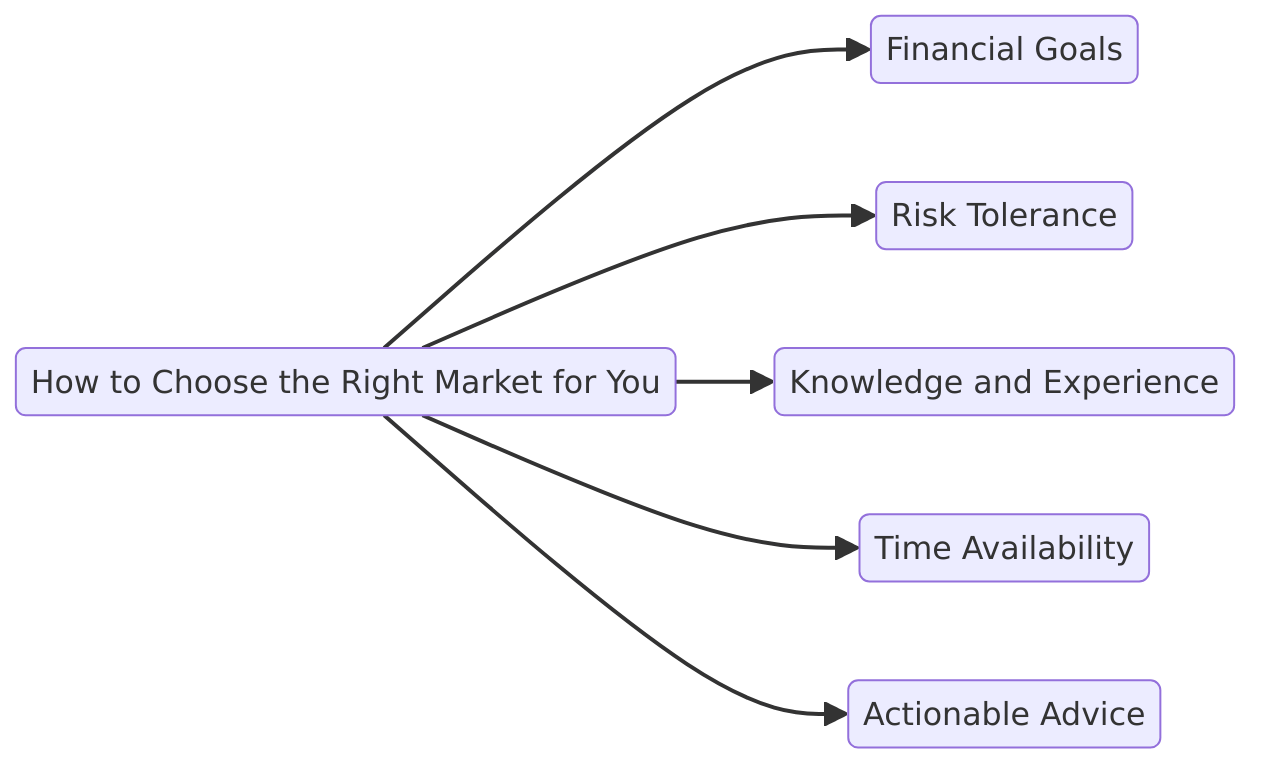
Conclusion
Trading in forex, crypto, and stocks offers unique opportunities, from high liquidity and innovation to long-term stability. Your choice should align with your financial goals, risk tolerance, and market expertise. Research thoroughly, practice with demo accounts, and diversify to enhance your chances of success. Understanding market characteristics equips you to trade smarter and achieve financial growth.
Unsure where to start? WhereToTrade can help!
Table of contents
1. What Is Forex Trading? 2. What Is Crypto Trading? 3. What Is Stock Trading? 4. Key Differences Between Forex, Crypto, and Stock Trading 5. Risks of Trading in These Markets 6. How to Choose the Right Market for You 7. Conclusion






